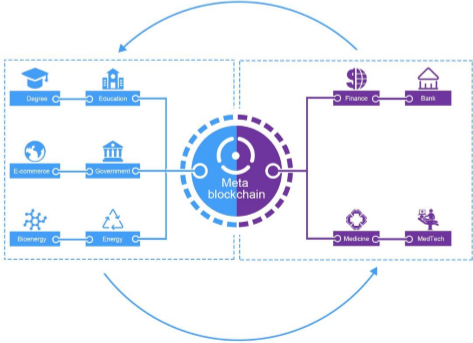In my previous post (neural consensus) about one of the key components of Seele, it was established that Seele utilizes both the neural consensus and e-differential agreements on its meta-chain to reach a faster consensus all around its whole heterogeneous forest network.
This is a continuation of the series on Seele's key components. This post aims to shed more light on the Heterogeneous Forest Network and how it addresses the current challenges being faced by the traditional blockchain networks.
HETEROGENEOUS FOREST NETWORK
The heterogeneous forest network is one of Seele's core components. It was introduced by Seele to provide a blockchain environment that consists of subnetworks that can be applied to different business scenarios.

The heterogeneous forest was introduced because the typical blockchain networks (ethereum, EOS etc) currently utilize a single chain structure thereby making transaction processing to occur on a single chain. However, this current process would have been very viable when the evolution of blockchain was still in its early stages. However, due to the continuous advancement of blockchain technology, this single chain structure has been observed to have several defects such as low performance, the entire network being submerged by a single business and inability to attain cross-chain communication between separate chains.
Having identified the current challenges with the single chain structure, Seele decided to introduce the multiple chain structure as a better and effective option to the single chain. This is because the multi-chain structure utilizes a framework that enables it to at least meet the variety of business requirements. In addition, the heterogeneous forest network will make use of subnets that can manage several business use cases. It will enable a blockchain-based business integration whereby subnets can communicate with each other through cross-chain or domain protocols.

The heterogeneous forest provides a blockchain ecosystem that comprises subnets. These subnets are able to run independently and it exists in the form of a hierarchical partition tree, with the Meta chain being the peak of all the chains and helps to deliver configurations and scheduling service. Every chain in the tree is able to support several business models because they are separated based on business scenarios, isolation mechanisms, and performance value. The interesting thing about the subnets is that each of the layers has the capacity to determine its mechanism, thereby forming its own discrete environment. The amalgamation of all these discrete environments is what forms the big ecosystem.
In conclusion, the heterogeneous forest network being introduced by Seele will be able to meet different business requirements that the typical blockchain networks could not meet in the real world.
Kindly visit https://seele.pro/ for more information.
Whitepaper:https://s3.ap-northeast-2.amazonaws.com/wp.s3.seele.pro/Seele_tech_whitepaper_EN_v2.0.pdf
Telegram: https://t.me/seeletech
Twitter: https://twitter.com/SeeleTech
Facebook: https://facebook.com/seeletech
Writer: Sucre123456
Author's profile link:https://bitcointalk.org/index.php?action=profile;u=1820055;sa=summary